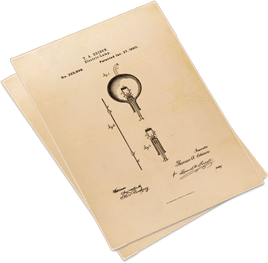Two special types of marks, collective marks and certification marks, differ from ordinary tademarks and service marks, generally, in that the registrants of these marks are not the users of them.
The purpose of an ordinary trademark or service mark is to identify to consumers the actual source — that is the maker or provider — of the goods or services with which the mark is used. In general, the owner of an ordinary trademark or service mark may not allow others to use its mark, and those other than the owner who, under certain circumstances, may use an ordinary trademark or service mark must be legally bound to the owner so that they truly represent the actual source of the identified goods or services. One of the most common examples of this sort of relationship is a franchise. In general, a franchisee of a business may usually use the business’s trademark or service mark, and, in fact, that’s usually the whole point of the franchise. On the other hand, a division of a registrant’s company or a wholly owned subsidiary of a registrant may not always be a legitimate user of the registrant’s mark. In any case, the owner of an ordinary trademark or service mark has a responsibility to guard the integrity of its mark as an identifier of source, and a registrant who permits its mark to be used illegitimately or deceptively may lose its rights in the mark.
Collective marks and certification marks, on the other hand, are not expected to be used by the persons, businesses, or organizations who register them or to identify their goods and services. Collective marks and certification marks are registered with the intention that others will use them.
Certification Marks
Autorized use of a certification mark indicates that the user of the mark has satisfied some essential standards or requirements defined by the owner of the mark. Probably the most well-known of these marks is the UL symbol (left) found on labels and tags attached to appliances, tools, machinery, and material products. In this case, the mark certifies that the goods on which it appears “conform to the safety standards established by Underwriters’ Laboratories, Inc.”
The certification represented by a certification mark does not necessarily relate to technical standards, however. Rather, the mark can indicate material content, some quality of material or manufacture, a method of manufacture or a mode of service, the geographic origin of the product, or that the provider or manufacturer meets the standards of or is sanctioned by a particular organization. In short, authorized use of a certification mark indicates only that the goods or services with which the mark appears satifies the particular criteria to which the mark’s owner attests. So a certification mark is not necessarily, nor even usually intended to be a mark of quality — in spite of a perhaps-unavoidable “color of quality” that such marks tend to take on in the collective public mind.



Collective Marks

A collective mark can also be used in connection with goods or services. Used with products, the mark shows that the maker or supplier of the goods, or the provider of the services, is a member of the organization or group represented by the mark. This use indicates that the member adheres to the standards of organization rep[resented by the mark in the making of goods or delivery of services, not necessarily that the goods or services are provided under the auspices of the owner of the collective mark.
*McDonald’s? and design is a registered trademark of McDonald’s Corporation.
UL? and design is a registered certification mark of Underwriters’ Laboratories, Inc.
Member Officially Recognized Junior Chamber of Commerce The United States Junior Chamber of Commerce? and design is a registered collective mark of The United States Jaycees.
100% Recycled Paperboard? and design is a registered certification mark of 100% Recycled Paperboard Alliance, Inc.
Educational Content Approved By The Children’s Educational Foundation, Inc. and design is a registered certification mark of The Children’s Educational Foundation, Inc.
*Note: The trademark information in this page is taken from the public records of the U. S. Patent and Trademark Office. These marks have been chosen for illustration only. None of the named companies or organizations sponsor this page or have any affilliation with our firm. No certification, affiliation, or membership is implied by or to be inferred from any of these marks.


